Cold Noodles with Sesame Sauce
Cold Noodles with Sesame Sauce are also called cold noodles, also known as "over-water noodles". It originated from the Tang Dynasty . It refers to cold noodles. The main ingredients are noodles and vegetables. The ingredients are chilli oil, salt, monosodium glutamate and so on. However, cold noodles in different places have different practices and ingredients.
In many parts of the world, there are cold noodles, which are popular in summer.
Cold noodles, also known as "water surface," the ancient name of "cold pan", legend originated in the Tang Dynasty before Wu Zetian entered the palace, because Wu Zetian and his lover eat Shanxi noodles scalded tongue, so the two people will study a new way to eat cold noodles.
Du Fu, a great poet, once wrote a poem called "cold leaves of the leaves of Sophora japonica". The new noodles come near the market, and the juice is applied to each other. It is cold to snow, and advise people to throw this bead. The poet said that "cold noodles with locust leaves" refers to green noodles made from fresh and tender locust leaf juice and noodles. Green itself is a cold color, coupled with cooked noodles washed over water, will naturally give people a "cool" feeling.
Cold noodles are eaten everywhere, tastes everywhere, and features everywhere, such as cold noodles in the Central Plains (Henan), cold noodles in Sichuan, cold noodles with red oil in Shaanxi, cold noodles with hemp sauce in Shandong, cold noodles with eggs in Guangdong, cold noodles with thick strips in Shanghai, and cold noodles with willow leaves in Shanxi. Tianjin's "cold noodles with brine", Beijing's "cold noodles with vegetable shreds", Lanzhou's "cold noodles with clear soup and beef", Hubei's "cold noodles with fried sauce", and so on.
According to legend, when Emperor Gaozong of the Tang Dynasty, Wu (Wu Zetian), the daughter of the warrior of the Ministry of Works, was selected as a talented person by Emperor Taizong of the Tang Dynasty at the age of 14. At that time, because of her fate, she had to leave her childhood sweetheart boyfriend Chang Jianfeng. When Wu Mei Niang was young, she used to swim in the bay with Jianfeng, and there was a noodle shop at the ferry. Every time they swam across the river, they always went to the noodle shop to eat a bowl. Therefore, he became familiar with the shopkeeper, and often ate light noodles while making, and after a period of time he had a deeper understanding of this. Later, they thought it would be nice to eat a cold noodle in summer. So he and the shop master together with the experiment, and finally developed a kind of soft and delicious rice paste, soft and sticky. Mei Niang and Jianfeng were so happy that they hugged together. When the chef saw the scene, he made fun of the couple. It was better to call it "Cool noodles with rice for husband and wife". It happened that it was Mei Niang's birthday again. The cooked noodles with rice for husband and wife were born in this way. It spread and became a local food that everyone liked to eat. Later, Mei Niang went to Kyoto Changan. Although she and Chang Jianfeng did not become husband and wife, the couple's noodles were handed down.
Later, Wu Mei-niang became empress and missed the idea of "couple rice noodles". On her birthday, she was ordered to cook a bowl of rice noodles for her by the imperial cook. Thus, until her birthday, the steamed rice noodles were still widely eaten in Guangyuan, Sichuan, but in other places, it was almost impossible to eat authentic rice noodles steamed by the empress.
Guangyuan cold noodles, also known as steamed cold noodles, special products of Guangyuan City, Sichuan province. It is produced only in Guangyuan and its neighboring counties and towns. Its taste gradually decreases with the distance from the center of the city. Its appearance is similar to Shaanxi cold skin, but its raw material is rice rather than flour. It can be steamed for 5-8 minutes by spreading a layer of cloth in the drawer cage. After steaming, it can be poured onto a desk covered with sesame oil or rape oil. Cool noodles are chewy, refreshing and can be eaten in a variety of ways. The most common way is to put them in a bowl and add soy sauce, spicy red oil (dense), vinegar (a little), salt, monosodium glutamate, garlic water (chopped garlic and then added water), pepper and cooked oil (refined from clear oil) to make them palatable. It depends on the taste. If you don't want spicy red oil, add cooked oil. Finally, it can be decided by the taste. Add leeks, bean sprouts, celery, peanuts, mustard, etc. (usually with bean sprouts). After mixing, it has 5 flavors: sour, sweet, spicy, spicy and fragrant. Sichuan is full of flavor. The taste is smooth and refreshing. It can be eaten hot or cold. Each has its own flavor.
As the saying goes, "cold noodles are just Jianmen Pass". It shows the magic of Guangyuan rice noodles. From the water and soil of Guangyuan, no taste of Guangyuan cold noodles can be produced anywhere. Some people have tried in Guangyuan, but the taste is very bad, after several tests, no one dare to mention in Guangyuan outside the city to make cold noodles, then become a specialty of Guangyuan.
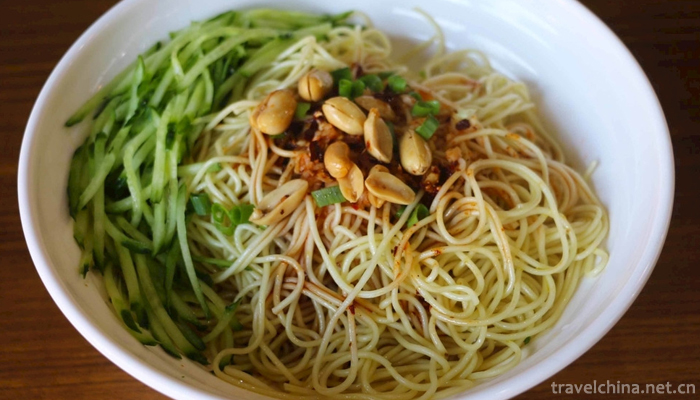
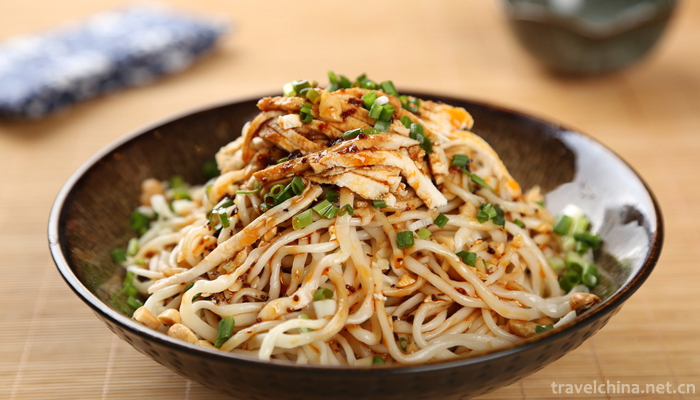
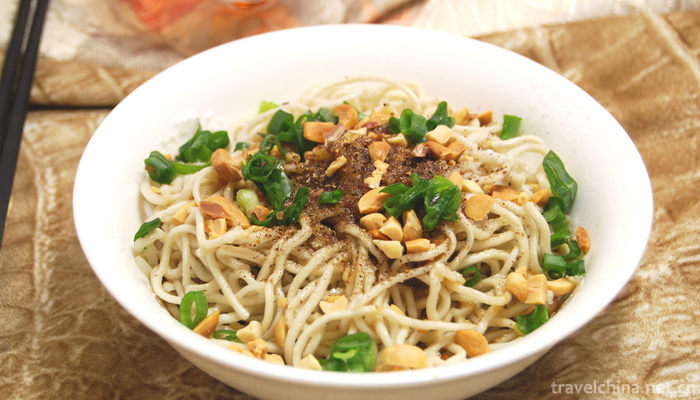

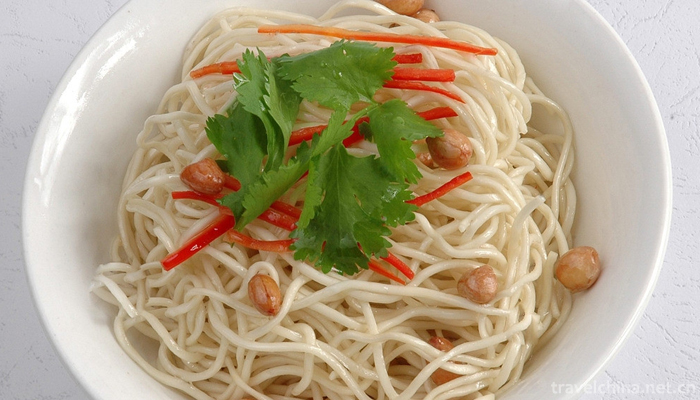

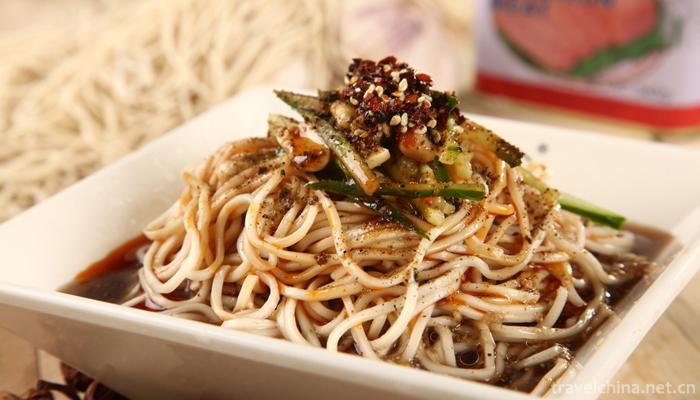
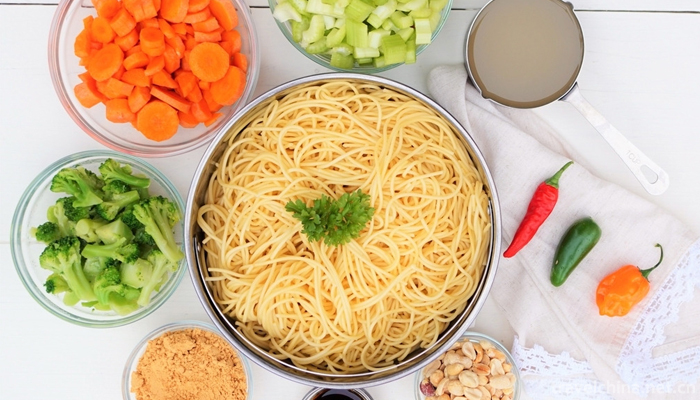
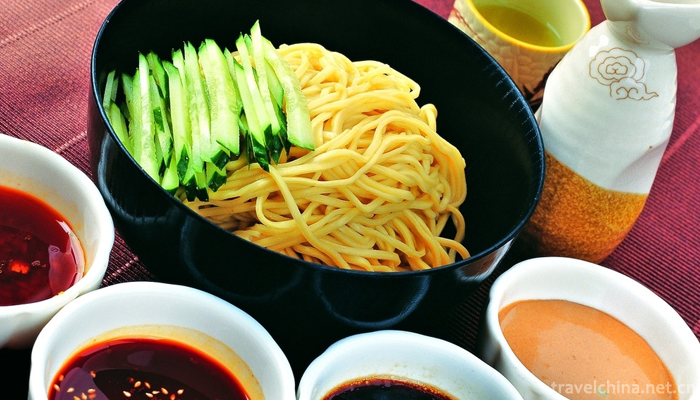
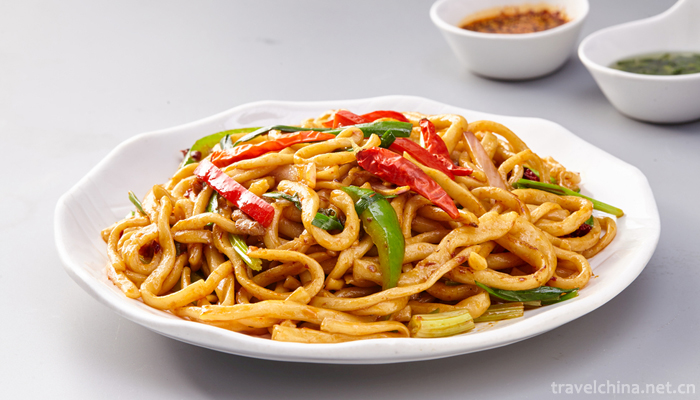
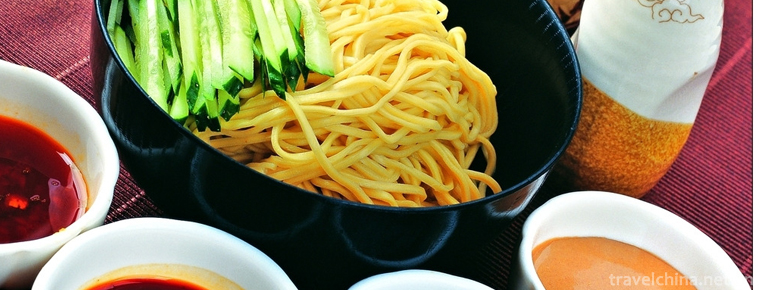
-
2.Bagong Mountain Tourist Scenic Area
Since 2001, Bagongshan Scenic Area has listed Bagongshan National Geopark, Bagongshan National Forest Park and Bagongshan National AAAA Tourist Area successively. Bagong Mountain is a famous historica
Time 2018-12-23 -
3.Hunan Forest Botanical Garden
Hunan Forest Botanical Garden, also known as Tianjiling National Forest Park and Changsha Botanical Garden, was established in 1985 with the approval of Hunan Provincial People's Government and is und
Time 2019-01-16 -
4.Zigong Dinosaur Museum
Zigong Dinosaur Museum is located in the northeast of Zigong City, Sichuan Province, 11 kilometers from the city center. It is a large site museum built on the world famous "Dashanpu Dinosaur Fos
Time 2019-03-22 -
5.Landscape Architecture in Yangzhou
Yangzhou gardens began in the Western Han Dynasty, flourished in the Sui and Tang Dynasties, matured in the Song and Ming Dynasties, and flourished in the Qianlong Period of the Qing Dynasty.
Time 2019-04-21 -
6.Jianchuan Opera
Jianchuan Baiqu is an ancient music variety with a long history and wide spread in Bai nationality area. It is mainly popular in Jianchuan, Eryuan and Tongdian, Jinding and Jiuhe of Lanping County, Nu
Time 2019-05-05 -
7.Skills of Dry Lacquer and Ramie in Tiantai Mountains
As early as the Eastern Jin Dynasty, dry lacquer and ramie had been used in Tiantai folk. Through the continuous efforts of the substitute craftsmen, their skills gradually matured. In the mid-Tang Dy
Time 2019-06-21 -
8.Sachet
Incense bag is also called odor-tolerant, incense bag, incense bag, incense sauce, Pei Mo. Nowadays people call it purse, toy and dim. It is a folk embroidery handicraft created by ancient Chinese wor
Time 2019-07-03 -
9.Maogus Dance of Tujia Nationality in Western Hunan
Maogus Dance of Tujia Nationality in Western Hunan Province, the traditional dance of Tujia and Miao Autonomous Prefecture in Western Hunan Province, is one of the national intangible cultural heritag
Time 2019-07-06 -
10.Firing Techniques of Yaozhou Kiln Ceramics
Yaozhou kiln is a treasure of Chinese traditional ceramic technology. It was created in the Tang Dynasty and matured in the Five Dynasties. It reached its peak in the Song Dynasty and declined gradual
Time 2019-07-11 -
11.Traditional craftsmanship of moon cakes
Guo Dulin Jin-style moon cakes are Shanxi specialty. They are simple in shape, mellow in taste, crisp and refreshing, sweet but not greasy. They are famous for their crispness, delicacy, sweetness, me
Time 2019-07-16 -
12.Chengdu Medical College
Chengdu Medical College is a full-time general medical college organized by the Sichuan Provincial People's Government. It is located in Chengdu, the capital of Sichuan Province. Its history can be tr
Time 2019-08-31